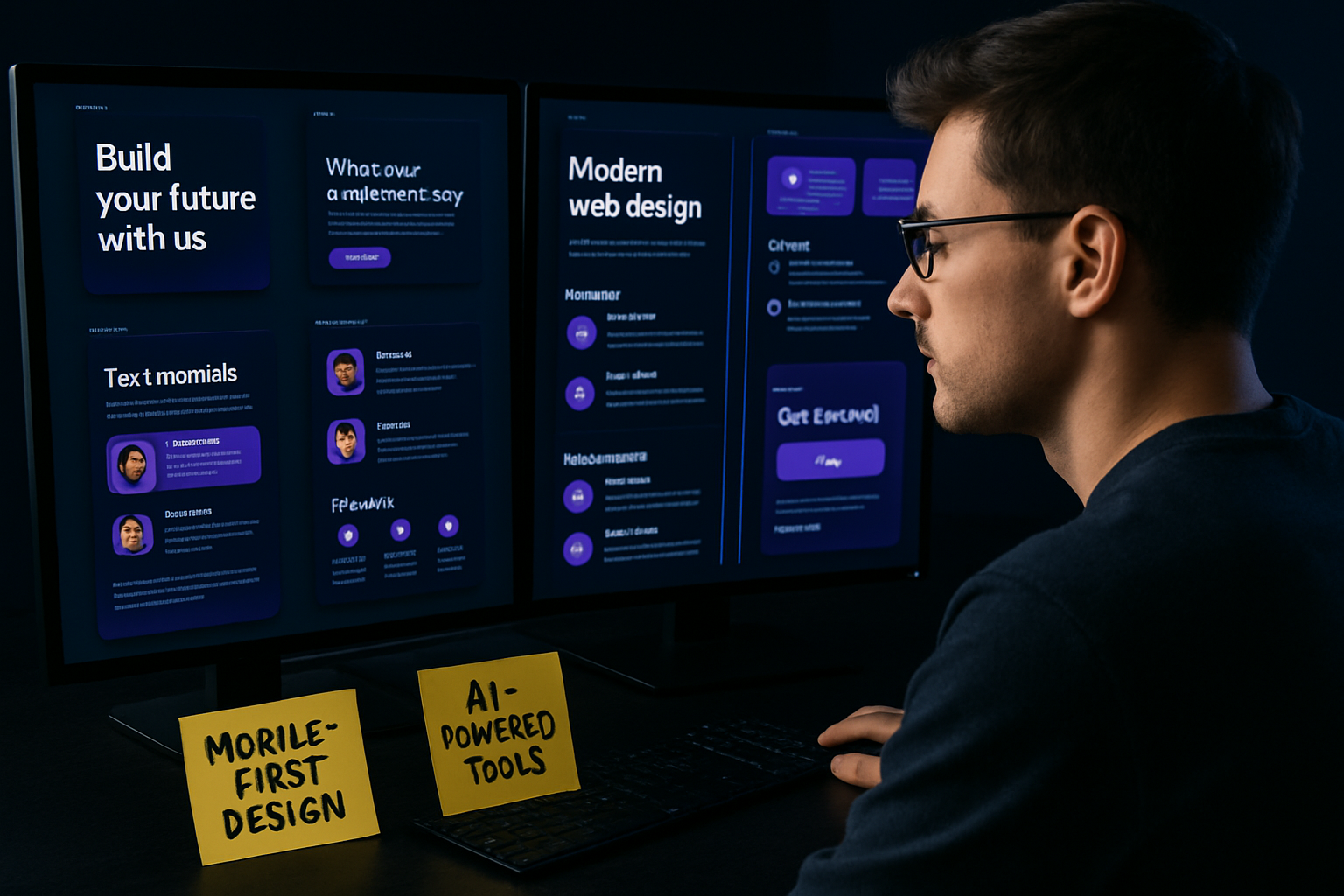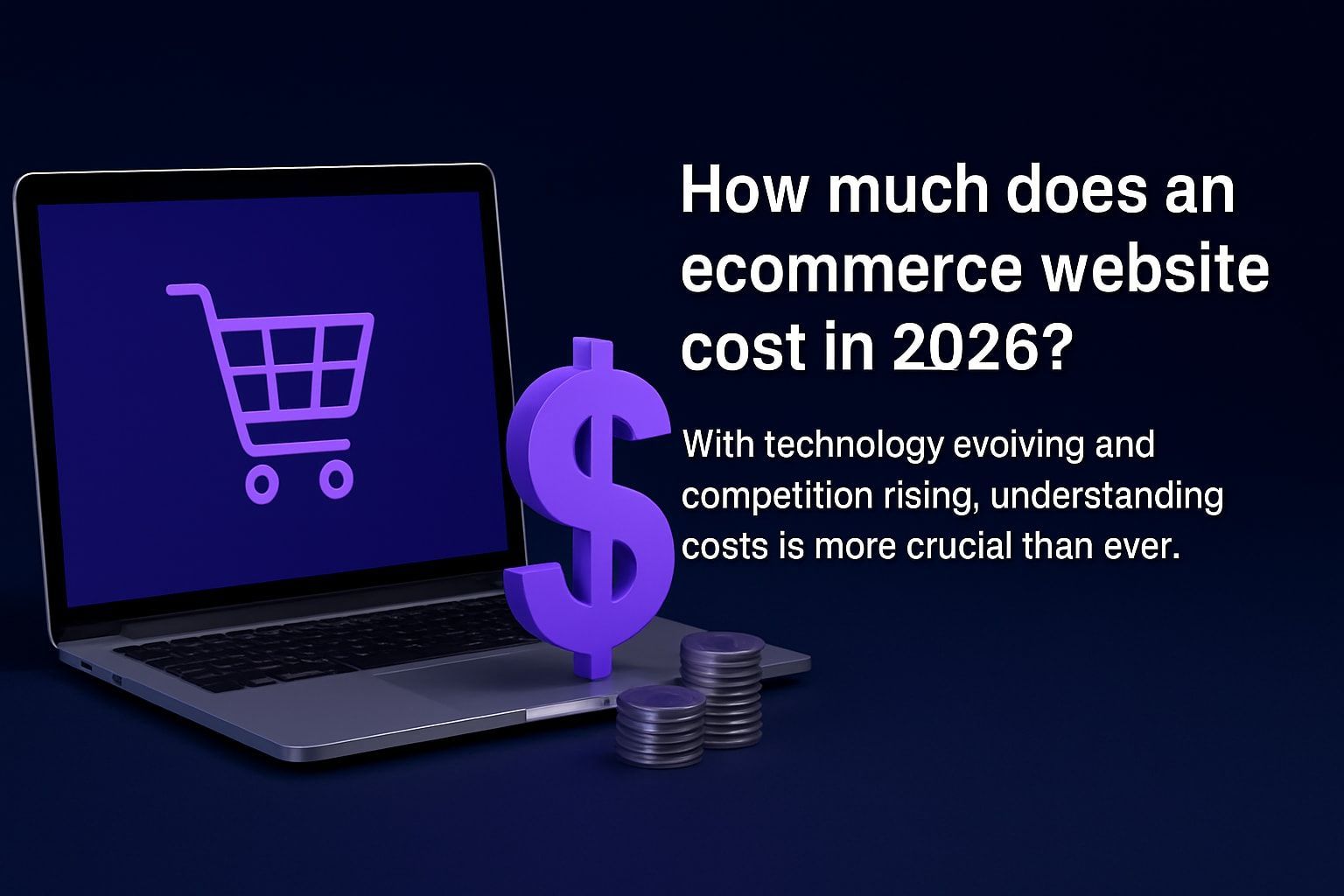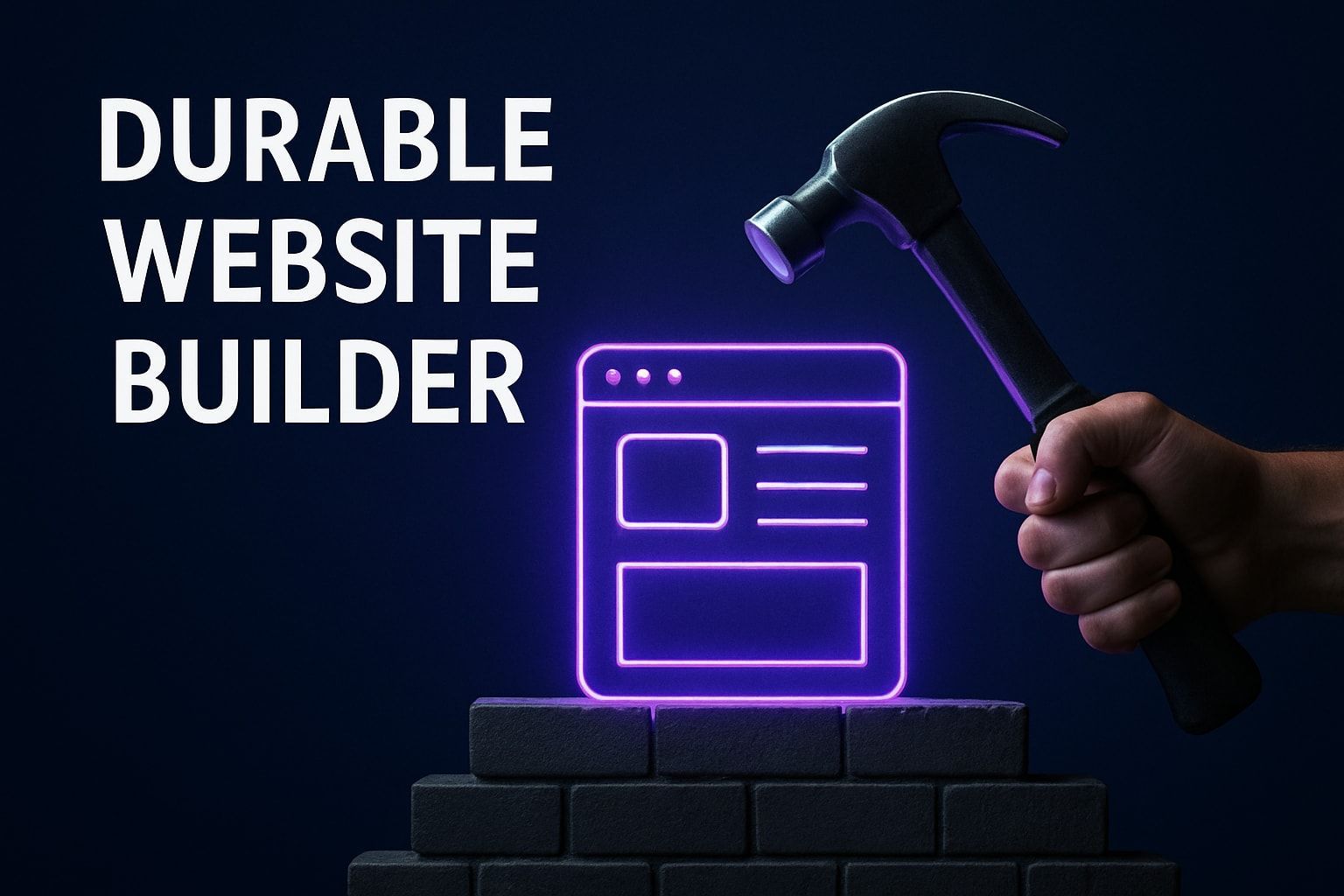7 Essential Sections of a Web Page for 2025 Success
The digital landscape is evolving rapidly, and 2025 is set to raise the bar for how we approach web design. Visitors expect more than just a pretty interface—they demand substance, speed, and clarity from every page they land on.
To thrive online, mastering the essential sections of a web page is no longer optional. It’s the foundation for higher engagement, stronger trust, and better search rankings. Whether you’re a business, creator, or brand, understanding these sections of a web page can make all the difference.
In this guide, we’ll break down the seven must-have sections that define a successful web presence in 2025. Discover how each section drives results, learn practical tips for implementation, and set your site up for future success.
Ready to transform your site’s structure and stand out in a crowded digital world? Read on to unlock the blueprint for web page excellence.
The Importance of Strategic Web Page Structure in 2025
Modern websites are evolving fast. In 2025, strategic planning of the sections of a web page isn’t optional—it’s essential. What worked yesterday might not engage today’s users or satisfy tomorrow’s search engines. Businesses, creators, and brands that master web structure will stand out, convert more, and build lasting trust.
The Shift in User Expectations and Digital Behavior
User expectations have changed dramatically in recent years. Speed, clarity, and personalization are now non-negotiable. With the rise of mobile-first browsing, visitors expect the sections of a web page to be clear, accessible, and easy to navigate. Accessibility isn’t just a trend—it’s a necessity for reaching wider audiences.
Today’s high-converting sites are built around these demands. Statistics show that well-structured pages increase engagement and lower bounce rates. For a deep dive into what users demand in 2025, check out the latest Web Design Statistics 2025. The bottom line? If your web page layout feels outdated or cluttered, you’re losing attention in seconds.
SEO, Conversion, and User Experience: The New Trifecta
The relationship between SEO, conversion rates, and user experience has never been stronger. In 2025, Google’s Core Web Vitals set the standard for performance and usability. Pages with clearly defined sections of a web page tend to load faster, rank higher, and engage users more effectively.
Consider these stats:
| Factor | Impact |
|---|---|
| Clear structure | 40% longer session duration |
| Fast load times | 70% lower bounce rate |
| Good UX | 2x increase in conversions |
A seamless layout supports both SEO goals and user journeys. If you want to convert visitors, start by optimizing your page structure.
The Role of AI and Automation in Web Design
AI is reshaping how we build websites. Modern AI-powered tools suggest optimal sections of a web page based on user behavior and industry best practices. Automation makes A/B testing faster, while personalization engines tailor experiences in real time.
For example, AI can analyze visitor patterns to recommend the ideal placement for testimonials or CTAs. As a result, brands see improved engagement and higher conversion rates. Embracing these advancements ensures your site stays ahead of the curve.
Common Mistakes to Avoid
Even in 2025, many sites fall into familiar traps when building the sections of a web page. Here are the most common mistakes to watch for:
- Outdated layouts lacking essential sections
- Overloaded pages with distracting elements
- Ignoring accessibility and mobile responsiveness
- Poorly placed CTAs or missing contact options
Avoiding these pitfalls ensures every section supports your goals and delivers value to visitors. By focusing on strategic structure, you’ll set your site up for long-term success.
7 Essential Sections of a Web Page for 2025 Success
A modern website in 2025 isn't just about looking good—it's about structuring your content for maximum impact, trust, and conversion. The online landscape is more competitive than ever, so every section of your web page needs to be intentional, user-centric, and optimized.
Below are the seven essential sections of a web page that every business, creator, or brand should implement for online success in 2025. Each section plays a unique role in guiding visitors, building credibility, and driving results.
1. Hero Section with Value Proposition
The hero section is the digital handshake—your very first chance to make an impression. In 2025, this part of the sections of a web page is more vital than ever. Users decide in seconds if they'll stay, so your hero must communicate value instantly.
Key Elements of a High-Impact Hero Section:
- Bold, clear headline stating your main offer.
- Subheadline that clarifies or expands on your value.
- High-quality supporting visuals or video.
- Prominent call-to-action (CTA) button.
Above-the-fold content matters because most users scan content in an F-pattern, focusing on headlines and CTAs. According to Nielsen Norman Group, 86% of visitors want to understand a site’s offering within 5 seconds. That’s why clarity and visual hierarchy are non-negotiable in this section of a web page.
Tips for Crafting a Winning Hero Section:
- Use concise language and avoid jargon.
- Choose visuals that reinforce your message.
- Personalize hero content with dynamic elements based on user data.
Personalization is trending, and many top brands now use AI to tailor their hero sections, boosting engagement and conversion rates. For a deep dive into smart hero design, check out Hero Section Design Best Practices.
Real-World Examples:
- SaaS providers highlight free trials with action-oriented CTAs.
- eCommerce sites showcase featured products or limited-time offers right up front.
When you optimize the hero section of a web page, you set the tone for the entire user journey.
2. Social Proof and Trust Signals
Trust is the currency of the internet. In 2025, visitors expect to see evidence that others have benefitted from your product or service. Social proof and trust signals are foundational sections of a web page—they reduce doubt and nudge users closer to action.
T
ypes of Social Proof That Convert:
- Customer testimonials and user reviews.
- Client or partner logos.
- Certifications, awards, and security badges.
Placement is key. Integrate trust signals near your hero section, product listings, and CTAs. According to BrightLocal, 92% of consumers read online reviews before making a purchase. Real-time review widgets and user-generated content (UGC) make your sections of a web page feel alive and authentic.
Visual Cues That Build Confidence:
- Star ratings and review counts.
- Media mentions or “As seen in” banners.
- Interactive badges or animated endorsements.
Case Study Snapshot: A B2B site added rotating client testimonials above their CTA and saw a 20% increase in conversion rates within a month.
A well-placed trust section of a web page makes visitors feel at ease, increasing the likelihood they'll take the next step.
3. Features & Benefits Overview
Once trust is established, visitors look for details—what exactly are you offering? The features & benefits section of a web page answers this question, helping users quickly assess fit.
Features vs. Benefits:
- Features: What your product does (e.g., “24/7 support”).
- Benefits: How it helps the user (e.g., “Get help whenever you need it”).
To improve skimmability, use:
- Bullet points for quick reading.
- Icons for visual appeal.
- Short, impactful descriptions.
Visual aids and micro-interactions (like hover animations) help clarify complex features and keep users engaged. According to HubSpot, pages with clear benefits can increase engagement by up to 40%.
Tips for a Strong Features Section:
- Address pain points directly.
- Offer solutions that feel personalized.
- Consider dynamic feature lists for different user types.
xamples from Industry Leaders:
- SaaS platforms display feature comparison tables.
- eCommerce stores use icon grids to showcase product advantages.
A concise, benefits-driven section of a web page keeps users interested and moves them closer to conversion.
4. Avantiy: AI-Powered Website Builder for Modern Web Pages
Building all the vital sections of a web page from scratch can be overwhelming. Avantiy steps in as a powerful solution, offering an AI-powered website builder that makes crafting modern web pages effortless.
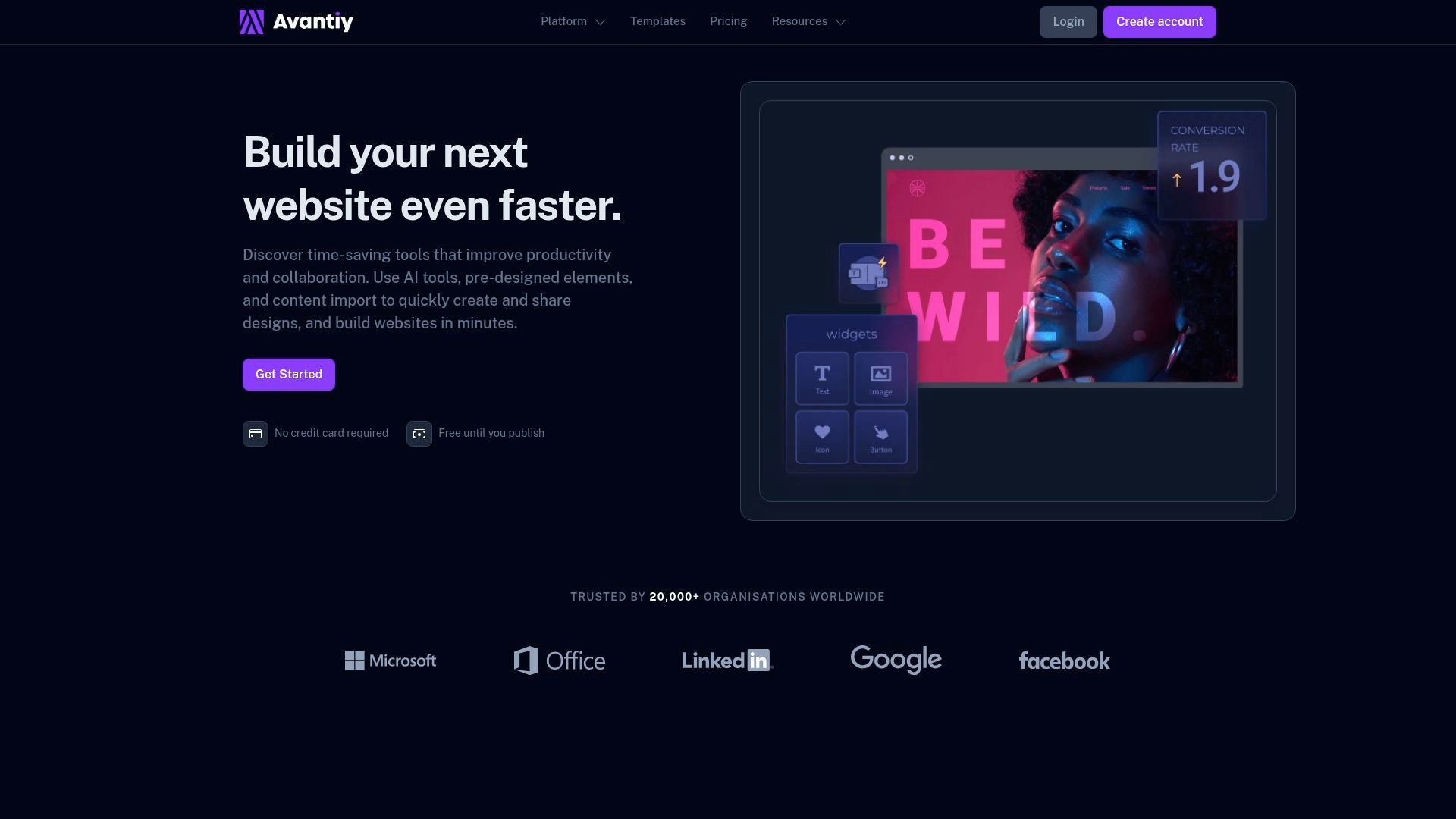
Avantiy’s drag-and-drop editor, customizable templates, and built-in SEO tools enable users to assemble every essential section—hero, social proof, features, and more—with ease. The platform’s intuitive interface allows you to launch sites quickly while ensuring mobile optimization and high Core Web Vitals scores.
Key Benefits:
- Rapid website launch and streamlined workflows.
- Over 400 integrations and dynamic content management.
- Free plan, AI content assistant, and seamless scalability.
Use Cases:
- Small businesses can build professional sites without hiring developers.
- Startups and agencies benefit from faster project delivery.
- Creators launch personal brands with minimal effort.
Avantiy users report 50% faster website build times and improved search rankings. With its AI-driven recommendations, the platform helps ensure all sections of a web page are optimized for both users and search engines. For a closer look at Avantiy’s capabilities, visit their AI-powered website builder overview.
5. Conversion-Focused Call-to-Action (CTA) Section
A strong call-to-action is the engine that drives results. The CTA section of a web page guides visitors toward your desired outcome—whether that’s signing up, requesting a quote, or making a purchase.
Types of CTAs:
- Primary: The main action you want users to take (e.g., “Start Free Trial”).
- Secondary: Supporting actions (e.g., “Learn More”).
- Contextual: Embedded within content for relevance.
- Sticky/Floating: Remain visible as users scroll.
Best Practices:
- Place CTAs above the fold and after key information.
- Use contrasting colors and compelling microcopy.
- Personalize CTAs—HubSpot reports a 121% lift in conversion rates when CTAs are tailored to the user.
Examples that Convert:
- Subscription services use sticky sign-up bars.
- Retailers deploy limited-time offer buttons.
Mistakes to Avoid:
- Overloading the page with too many CTAs.
- Using generic phrases like “Click Here.”
A well-crafted CTA section of a web page eliminates confusion and channels user intent toward action.
6. Engaging Content or Resource Section
To keep users engaged and returning, offer valuable content. The resource section of a web page can educate, inform, or entertain, positioning your brand as an authority.
F
ormats That Work:
- Blog post previews or featured articles.
- Explainer videos or product demos.
- Downloadable guides, checklists, or whitepapers.
Internal linking within this section supports SEO, guiding users deeper and increasing session duration. According to the Content Marketing Institute, pages with resource sections see double the average session time.
Personalization and Dynamic Content:
- Show resources based on user interests or browsing history.
- Highlight trending or most-shared content.
Examples:
- SaaS platforms feature webinars and case studies.
- eCommerce brands offer style guides or how-to videos.
Integrate lead magnets and email capture forms to turn engaged visitors into leads, making this section of a web page a growth engine.
7. Contact & Support Section
Trust and accessibility go hand in hand. The contact & support section of a web page is critical for conversions—users need to know you’re reachable.
Key Elements:
- Simple contact forms for quick inquiries.
- Live chat for instant support.
- Phone number, email, and location map for transparency.
Design this section for mobile and accessibility. Make sure all interactive elements are easy to use on any device. KoMarketing reports that 44% of visitors leave if they can’t find contact info easily.
CRM & Support Integration:
- Sync form submissions with your CRM.
- Use chatbots for 24/7 support.
- Offer FAQs and community links.
Examples:
- Service providers use multi-channel support options.
- Online retailers add real-time order tracking and chatbot help.
A clear, accessible contact section of a web page reassures visitors, encourages questions, and builds long-term loyalty.
Future-Proofing Your Web Page: Trends to Watch in 2025
Staying ahead in 2025 means more than just updating your visuals. The way you structure the sections of a web page will shape user experience, accessibility, and business growth. As digital trends evolve, adapting your site’s structure sets you apart from competitors. Below, we explore four major trends that will define how successful websites organize their sections of a web page in the coming year.
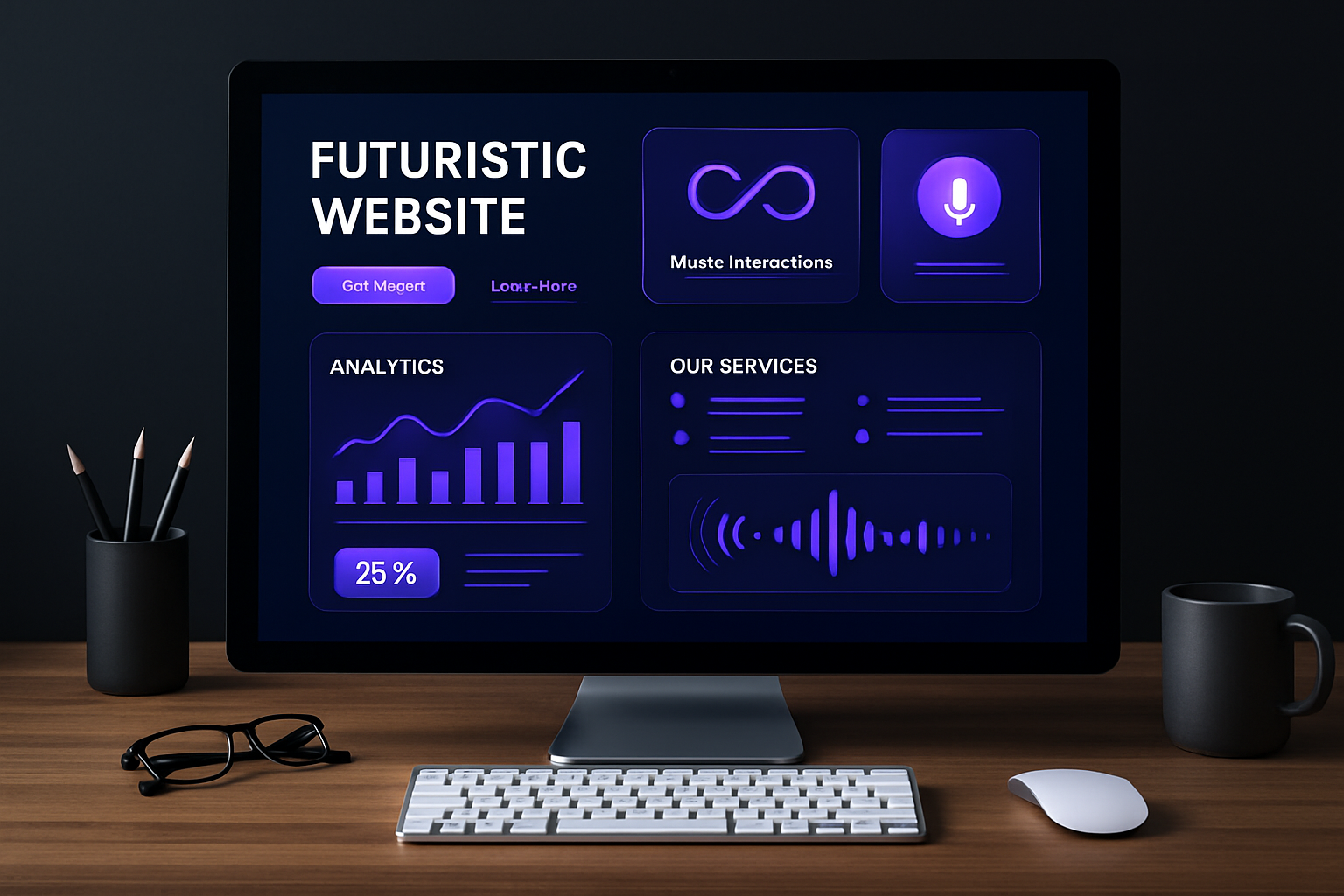
AI Personalization and Dynamic Content Delivery
AI is revolutionizing how sections of a web page adapt to each visitor. In 2025, machine learning algorithms will analyze user data in real time, customizing headlines, visuals, and offers based on browsing habits and preferences. Imagine landing on a site that instantly tailors resources, testimonials, and product highlights to your interests.
Dynamic sections of a web page respond to user actions, making engagement seamless. For an in-depth look at what’s next, check out Web Design Trends 2025, which highlights how AI-driven personalization is setting new standards across industries. Embracing this trend ensures your web presence remains relevant and compelling.
Voice Search and Accessibility Enhancements
The rise of voice assistants and smart devices means users now expect hands-free navigation. Websites in 2025 will integrate voice search and conversational interfaces directly into key sections of a web page, from hero banners to resource libraries. This shift makes information more accessible to a wider audience, including those with disabilities.
Prioritizing ADA compliance is not optional—it’s essential. Use clear headings, alt text, and logical tab orders to ensure every section of a web page is usable by everyone. Proactive accessibility boosts both user satisfaction and your SEO performance, making your site more discoverable and inclusive.
Micro-Interactions and Advanced Animations
Subtle animations and micro-interactions are transforming how users experience sections of a web page. In 2025, expect to see animated buttons, hover effects, and progress indicators that guide attention and reward user actions. These small touches make websites feel lively and responsive.
Data shows that micro-interactions can increase time-on-page by 20%. Consider using animated transitions between sections of a web page to create a cohesive, memorable journey. These enhancements not only entertain but also improve understanding and navigation, helping visitors intuitively explore your content.
Integrated Analytics and Continuous Optimization
Continuous improvement is the new standard for high-performing sections of a web page. Built-in analytics tools now track user engagement on each section, allowing you to see which elements drive conversions and which need refinement. This granular insight empowers data-driven decisions.
Pair analytics with regular A/B testing to optimize layouts, CTAs, and resource sections. For inspiration on how to adapt your site’s structure, browse
website templates for every section packed with future-ready designs and features. By embracing analytics and iteration, you ensure your sections of a web page stay effective and future-proof.
You’ve just seen how the right web page sections can make all the difference for success in 2025—whether you’re launching a business, growing your brand, or sharing your passion online. With Avantiy’s AI-powered tools, you don’t need to worry about complicated coding or design. We make it easy to build a site that’s fast, beautiful, and packed with all the essentials covered in this guide. Ready to put these strategies into action and create a website that stands out?
Start Building Your Website Today and see how simple it can be!
Start building your new website today
No credit of debit card required start building today

